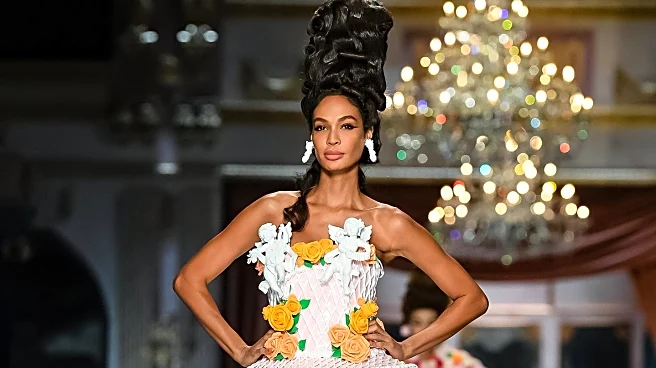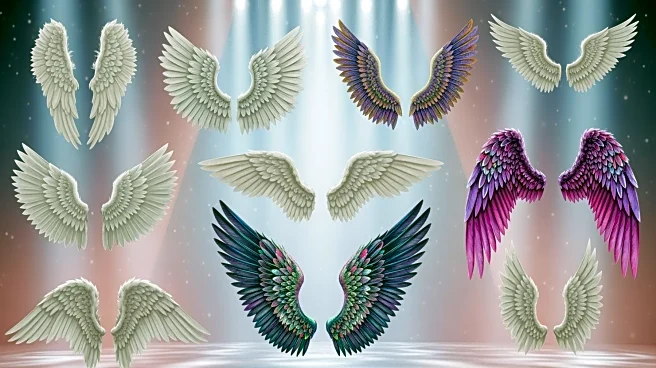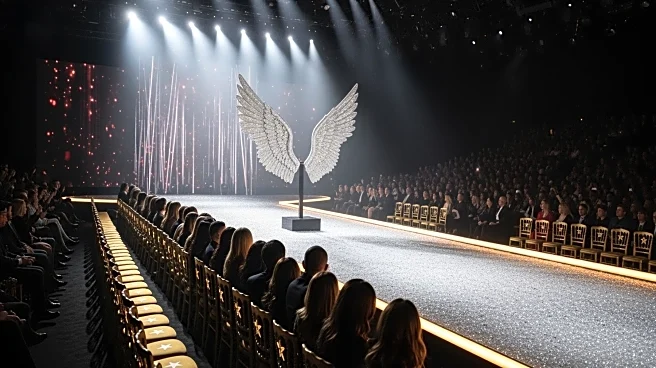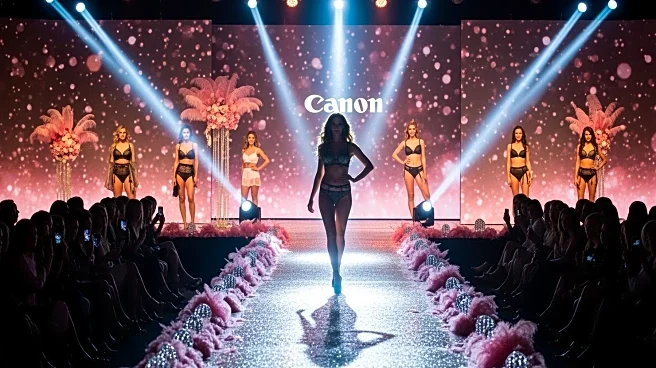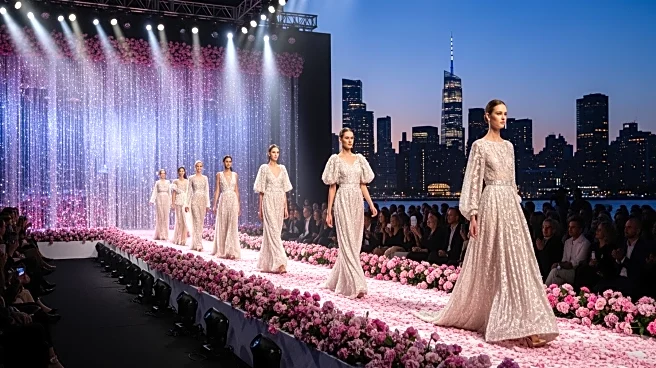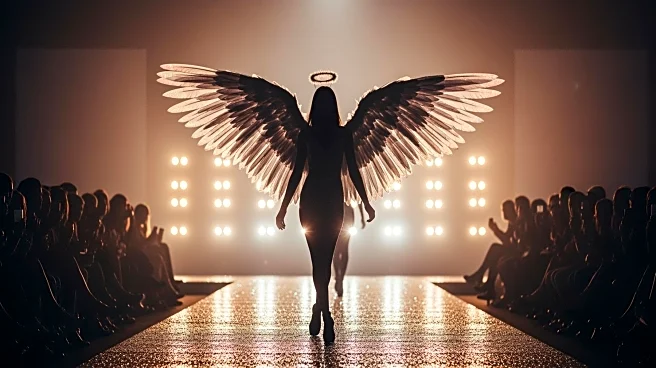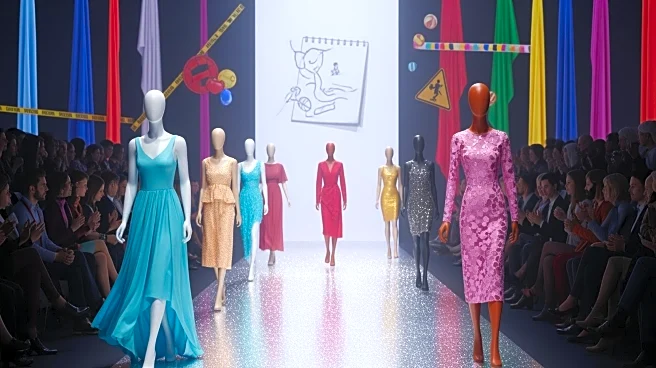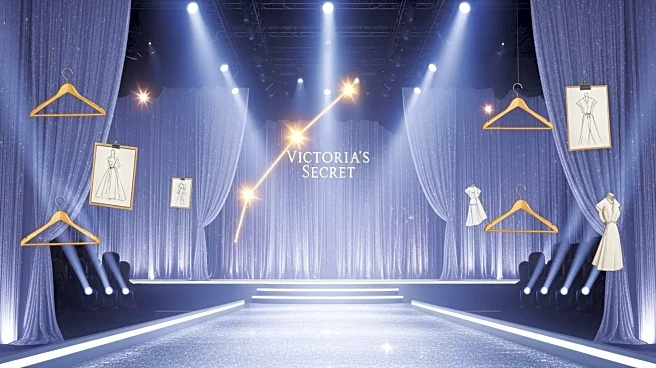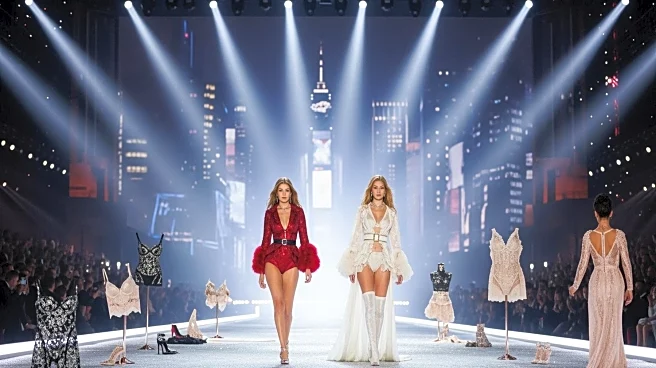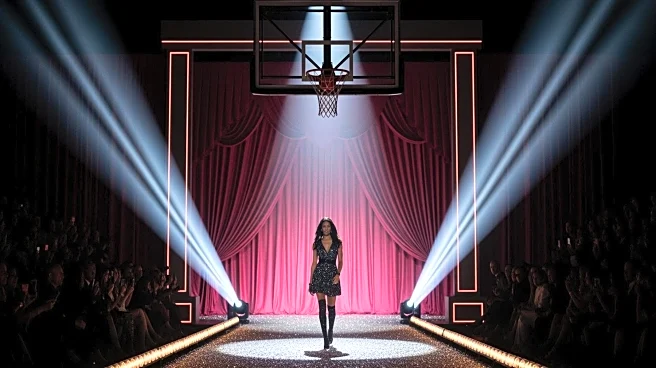What's Happening?
Victoria's Secret has staged the second iteration of its retooled fashion show at the Brooklyn Navy Yard, marking a significant shift in its approach to inclusivity and modern aesthetics. Under the leadership
of Chief Executive Hillary Super, the show featured a diverse cast, including veteran models like Adriana Lima and Gigi Hadid, as well as newcomers such as Anok Yai and Alex Consani, the latter being the show's first transgender model. The event also included plus-size models like Paloma Elsesser and Ashley Graham, and non-models such as Olympic gymnast Suni Lee and WNBA star Angel Reese. The show aimed to blend the brand's heritage of glamour and sexiness with a modern, female-centric perspective. Performances by Gen-Z pop star Madison Beer and Millennial favorite Missy Elliott, along with global artists like Colombian musician Karol G and K-pop group Twice, added to the show's appeal. The event was designed to attract both former and new customers by showcasing a variety of looks, from casual apparel to extravagant accessories.
Why It's Important?
The revamped fashion show is crucial for Victoria's Secret as it attempts to regain its market position and appeal to a broader audience. The company's market cap has significantly decreased since 2021, and it faces challenges from competitors like Skims. By incorporating diverse models and modern aesthetics, Victoria's Secret is addressing past criticisms regarding body diversity and inclusivity. This strategic shift is aimed at attracting younger consumers and retaining existing ones who have drifted to other brands. The inclusion of a wide range of body types and backgrounds reflects a broader societal push towards diversity and representation in fashion. The show's success could influence industry standards and consumer expectations, potentially leading to increased sales and brand loyalty.
What's Next?
Victoria's Secret will continue to monitor consumer reactions and sales data to assess the impact of the revamped fashion show. The company plans to leverage feedback from this event to refine its marketing strategies and product offerings. With new leadership in place, including Chief Marketing Officer Elizabeth Preis and Executive Creative Director Adam Selman, the brand is poised to implement further changes that align with its modern vision. The partnership with Amazon Prime for online shopping during the show indicates a move towards integrating digital platforms to enhance consumer engagement. The company will likely focus on expanding its product lines, particularly bras, which have been identified as a key area for growth.
Beyond the Headlines
The fashion show represents a broader cultural shift towards inclusivity and diversity in the fashion industry. By featuring models of various body types and backgrounds, Victoria's Secret is contributing to the ongoing dialogue about representation and empowerment in fashion. This move may inspire other brands to adopt similar practices, potentially leading to a more inclusive industry. Additionally, the emphasis on modern glamour and female-centric sexiness challenges traditional notions of beauty and fashion, encouraging consumers to embrace diverse interpretations of style.
